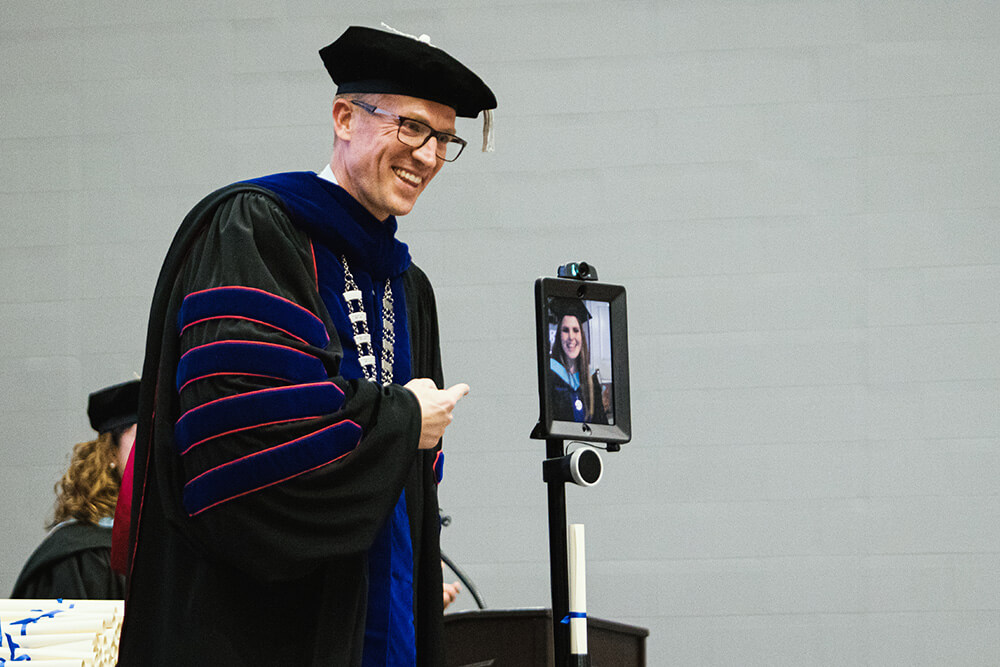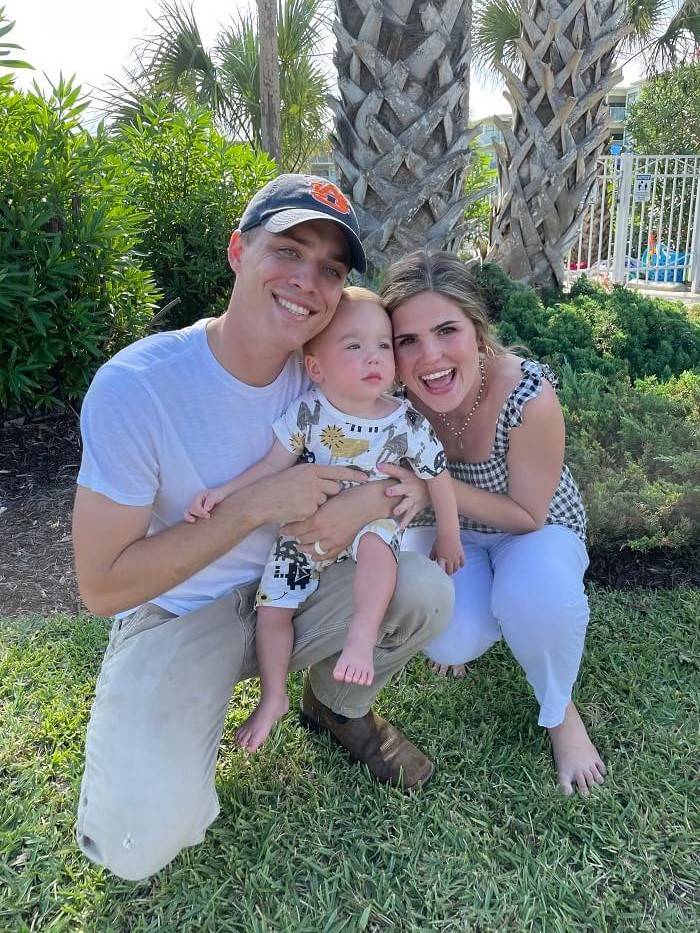Go West, Go Robot: Technology Allows Housebound UWG Grad to Attend CommencementShare this page
When Samantha Conerly learned she couldn’t attend the Fall 2021 University of West Georgia commencement ceremony for health reasons, she naturally experienced a flurry of emotions.

“Completing an accelerated master’s while working full time and taking care of a toddler has been no easy task,” explained Conerly, a teacher at Central High School who received her bachelor’s degree in mathematics from UWG in 2019. “I am currently expecting my second son, and when I learned I was being put on bedrest just a month before graduation, I was extremely disappointed. Although I knew I would still receive my degree, it just didn't feel as ‘special’ without the cap, gown and ceremony.”
But thanks to new technology, Conerly was able to participate in the day she’s been looking forward to since beginning the program.
“Because of this resource – which interweaves the power of human connection with the sophistication of technological innovation – Samantha and her family are not missing a pivotal moment in the evolution of her education,” said Dr. Brendan Kelly, UWG president. “This is one example of how UWG curates first-choice experiences in the lives of our students.”
The UWG College of Education’s Innovation Lab is home to a variety of emerging technologies, one of which is a telepresence robot from Double Robotics that Conerly controlled remotely to cross the stage and receive her degree.
According to Brian Lane, director of technology innovations in the Department of Educational Technology and Foundations, graduation is just one way people can use this robot, one he likens to “an iPad on wheels.”
The technology has been around for a while, but with the pandemic, it gained momentum and became an even greater tool.
“With COVID-19, everyone began participating in streaming meetings, like Google Meet and Zoom,” he said. “But where this is unique and separates itself from other platforms is you can actually move it around. So we’ve used them in classrooms, and I’ve even given tours of our lab to online students.”
The premise is simple. Lane begins by sending users like Conerly a link, and anyone who has the link can log in to the iPad. It shows the user’s face and allows him or her to control where the robot goes.
Conerly said the progressive technology was easy to access and the controls were intuitive.

“Despite the simplicity of using the technology, it was extremely innovative,” she observed. “The video quality and movements of the robot were impeccable. It really felt like I was there in person. I could approach others and communicate with them in real-time.”
Lane explained the Innovations Lab, which houses a variety of educational technologies – ranging from video cameras to 3D printers to virtual reality systems – has expanded its offerings beyond just faculty, staff and student usage. Local educators are also checking out equipment so individuals who can’t physically visit the schools can still present to classes.
There are even hopes of retirement homes borrowing the technology in order for residents to “visit” with their relatives, especially in times that quarantine doesn’t allow them to do so in person.
How will technology like this continue to evolve and shape our world?
“I think it’s going to bring more humanity to online options and bring a personal feel to things,” Lane mused.
“Technology is already creating an environment in which students can receive equitable educational opportunities from anywhere,” Conerly concluded. “It’s even allowed me to support my students from home, while on bedrest. And thanks to this innovative technology, I was not only able to attend my graduation, but I am also able to be a part of history in the making.”
